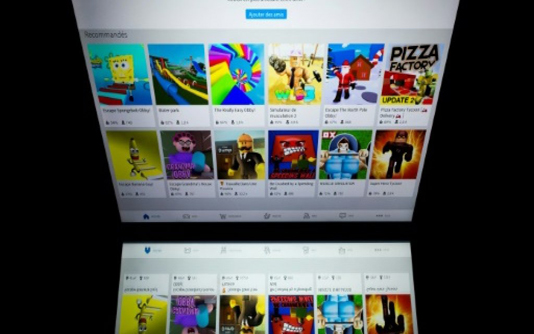PARIS, Feb 15, 2019 (BSS/AFP) – With its Lego-like avatars and easy-to-
learn coding for budding programmers, the online gaming app Roblox has
cornered the market in younger gamers, with 80 million monthly users, many of
them under 16.
Now the platform, which has already taken the United States by storm, is
setting its sights on Europe and Asia to become a global giant.
Kids log on to the mobile app after school to guide their avatars through
obstacle courses full of pitfalls, escape from jail, dive into a treasure
hunt or even to build their own adventure park.
None of it is very original, content-wise, and its simplistic, blocky style
cannot compete with the lush aesthetics of the big studios’ games, but its 3D
user-generated games are aimed at younger players, and at teaching them
coding skills for the future.
“It’s not a game, it’s a platform for creativity and play,” said Chris
Misner, head of Roblox International.
“We provide tools and support for people to build what their imagination
wants. The only limit is their imagination.” The company does not release
much user data, but claims to have 80 million active players per month in
more than 30 countries. Most of the players are aged nine to 12, while
content creators tend to be 16 and over.
Misner told AFP the company spends almost nothing on advertising — word of
mouth has been enough to make it one of the most popular entertainment
platforms among 6-12 year-olds, according to Comscore.
“We have positive cash-flow,” said Misner. – ‘Building houses’ –
“It is not the first ‘meta game’ to allow users to engage in world-
building, but it’s certainly the first to have done so well,” said Laurent
Michaud, of the online think tank Idate.
While it is free to play, Roblox makes its money from users buying up units
of its virtual currency, “Robux,” to personalize their avatars or buy kit
that helps them advance through the game.
The best developers can make money off it too. Alex Balfanz, a 19-year-old
American, created several games before striking gold with his game
“Jailbreak” in April 2017, which according to US media racked up more than $1
million in a year.
But most of the 56 million games available on the app do not enjoy that
level of success.
“Last year I was playing ‘Blocks bird’ with some friends. You have to get a
job, you build houses and go to your friends’ houses for parties,” said
Edouard Chatelain-Moor, 11, who lives in the US capital Washington.
“I don’t play that often now,” he said. “There are some good games, but you
get tired of them after a while because updates are rare.”
Launched for computers in 2006, Roblox took a decade to really take off. It
is now available on most devices, including Virtual Reality helmets, and even
runs summer camps to teach kids to code games.
– ‘Gang rape’ –
Last summer, Roblox gained a lot more publicity, but initially for the
wrong reasons.
In June, a seven-year-old girl who was playing the game showed her mother
the screen of her iPad, where her avatar was being attacked by two male
characters.
It was a scene which the mother, Amber Petersen, later described on
Facebook as a “violent gang rape” of her little girl’s online character.
“We were upset that somebody had violated the code of conduct,” said
Misner, noting that 700 moderators oversee the platform.
“It was very a specific incident, we were able to shut it down and put
safeguards. It was contained and addressed rapidly.”
The disturbing incident has not dented the financial health of the gaming
platform: five months ago, it raised $150 million in a round of investor
funding and was valued at $2.5 billion, the magazine Techcrunch reported.
“The money will be used to build our infrastructure and our network
globally, to increase the performance of our platform and hiring lots of
people,” said Misner. “We invest in technology, people, safety, creativity.”
As well as being available in English in dozens of countries, Roblox can
also be played in Spanish, and has added some support services in French,
German, Portuguese, Korean and Mandarin.
It doubled its number of users last year in the European market, which it
predicts will surpass its US audience in three to five years.



